Books
Books
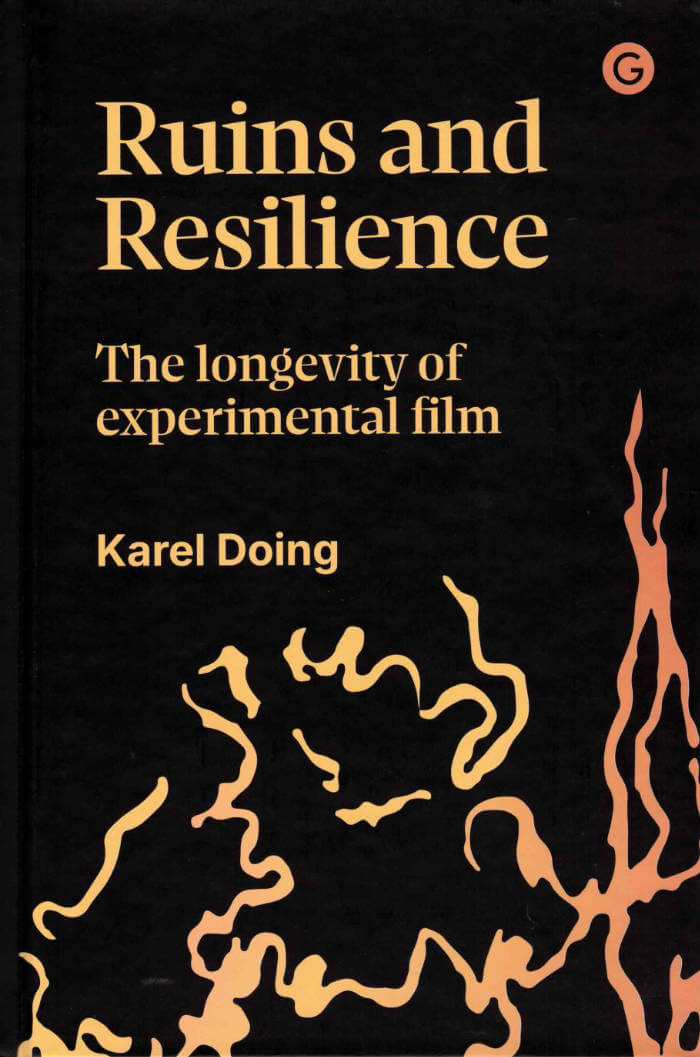
Ruins and Resilience: The Longevity of Experimental Film
Experimental film practice from an international and transdisciplinary perspective.
Karel Doing is an experimental filmmaker and researcher who has worked across the globe with fellow artists and filmmakers, creating a body of work that is difficult to pinpoint with a simple catchphrase. In Ruins and Resilience he weaves autobiographical elements and critical reviews together with his wide ranging interdisciplinary approach, reflecting on his own practice by positioning key works within the context of a vibrant experimental film scene in Europe, North and South America, and Asia. Doing demonstrates how experimental filmmakers have continued to renew their practice despite the almost total demise of analog motion picture film and the constant neglect of this art form by institutions and critics. Written in a fluent and accessible style, the book looks into the connections between the work of groundbreaking artists within the field and subjects such as transgression, improvisation, collectivity, materiality, phenomenology, and perception. Specifically, intersections with music and sound are investigated, appealing to the idea of the cross-modal brain, the ability to perceive sounds and images in an integrated way. Instead of looking again at the "golden era" of experimental film, the book starts in the 1980s, showing how this art form has never ceased to surprise and inspire. The author's hands-on engagement with the medium is formational for his more theoretical approach and writing, making the book a highly original contribution in the field that is informative and inspiring for academic and practitioners alike.

Myth Lab: Theories of Plastic Love
Myth Lab: Theories of Plastic Love is a genre-defiant sex-trip to post-human dimensions. If C.G Jung, magic-mushroom shaman Terence McKenna and Camille Paglia (Sexual Personae) had a three-way while binging on George Bataille and undergoing Hormone Replacement Therapy, their baby might be the erotic cocktail of Myth Lab. Its extreme theme is nothing less than the fate of the species.
“Brilliant and wild, Jack Skelley’s Myth Lab is a manifesto of exuberance disguised as a sci-fi sex test-center for the invention of communal futures. Skelley’s a mad scientist, scholar and poet.” - Chris Kraus, author of After Kathy Acker
“In Myth Lab, Jack Skelley adroitly molds an “Einsteinian elasticity between objects and ether” to the “clitoverse.” If this formulation seems too vast, just think about a) the last time you felt good about power and b) all the ways to say yes to pleasure as a source of liberation. In conducting a “cosmologic psychoanalysis,” Myth Lab thrillingly hot wires our neurons to an endless mirror stage reflective of our own instinctual nature.” - Kim Rosenfield, author of Phantom Captain
"An explosion of clit-cock-and-pop-culture worship. Skelley’s eroto-celestial universe fights back not only against the denial of desire – “also known as fuckheadocracy and market forces” – but against death itself." - Francesca Lia Block, author of Weetzie Bat
"A hallucinatory book that straddles gender studies, science-fiction, and cultural criticism (to name but three of many genres). Ever eager to use a newfound Skelley-ism, I urge everyone to read Myth Lab and be “Kardashian'd” with love (i.e buy it now, it's great)." - Susan Finlay, author of The Jacques Lacan Foundation
"In Jack Skelley’s Myth Lab, something weird and beautiful is forged in the crucible of infinite horny grief. It’s an epic, delirious descent into the inferno, navigating the concentric circles of romance and desire as literary malady, TikTok psyop, benevolent cosmological principle, and more. Simultaneously a quest, a physics experiment and an elegy. I loved following its narrator - a tender, erotomanic, Blakean particle - seeking and finding visionary head." - Daisy Lafarge, author of Love Bug

Wave of Blood
Is it the computerization of the planet
Or a loosening of my fidelity to suffering
I don’t understand the intensity
I’ve hidden here but I know I despaired
Of finding a physical place to keep
My tears. Now what. Seas that go turquoise
When you stop looking at them . . .
Wrestling with the mind of war, at times shocking in its self-analysis, Wave of Blood is a furious and sincere essay, an eclipse notebook, a family chronicle, all told in the poetry of witness.
Praise for Ariana Reines:
Ariana Reines is a go-for-broke artist who honors her traditions by being like no one else. Some of us have made a fetish of our stupidity, pretending to forget history, and some of us have made a fetish of despair, congratulating ourselves on melancholia, but Ariana is too brilliant and too alive for either of those sad luxuries... I am convinced of the authenticity of the summonses she receives and the summonses she issues and when I read her I am reminded that all of this is a calling before it's an identity or career. Her voice-which is always more than hers alone is a dialectic between the very ancient and the bleeding edge. - Ben Lerner
Reines's books are works of intellectual commitment and structural sophistication; at the same time, they allow the raw stuff of being, in all its messiness, to enter the page. -The White Review
Mind-blowing. - Kim Gordon
Her writing is queer and raunchy, raw and occult, seemingly never pulling away from her deepest vulnerabilities. Yet Reines simultaneously maintains a feeling of epic poetry, of ancient intention. She moves between worlds in search of the divine and the self. - The New York Times
These are the kinds of poems that reorient you in the world, make you understand how little you know, but how much is inside you. - NYLON
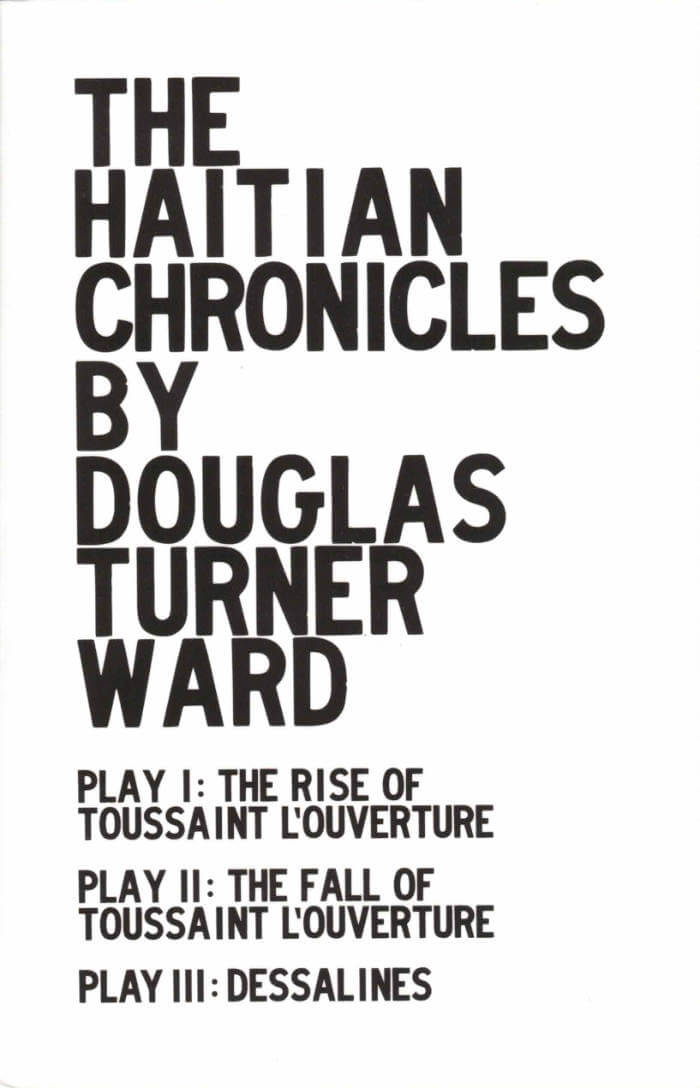
The Haitian Chronicles
The Haitian Chronicles is a graphic and brutal history of the Haitian Revolution told across three plays. It is the final work by the influential and groundbreaking playwright Douglas Turner Ward (1930-2021) and the first play of his to be published in several decades. Though much of his earlier work has been short one-act satires, The Haitian Chronicles takes place across three long plays: The Rise of Toussaint L'Ouverture, The Fall of Toussaint L'Ouverture, and the one-man drama, Dessalines.
The Haitian Chronicles is an example of Ward's political commitment to satirizing, dramatizing, and revealing the structures of white supremacy throughout the history of this so-called civilization. His first play, Star of Liberty, written at 19 years of age, was based the life of Nat Turner and the slave revolt he led. With The Haitian Chronicles, Ward returns to armed Black rebellion, taking as its subject matter the first and only slave revolt to successfully establish a free state. It is a self-consciously ambitious work of astounding narrative and theatrical scope, featuring over 80 speaking roles and logistically demanding production design. The narrative onslaught chronicling the disgusting brutality of colonial French society and the bloody force it took to overthrow it overwhelms the reader and challenges one to question the structures on which society is built and the violence it continues to perpetuate.
Ward was one of the central, driving forces of the Black Theater movement in the United States. After moving to New York in 1948, he became immersed in the radical political scene in Harlem, writing for The Daily Worker, and studying as an actor. He served as understudy to Sidney Poitier in A Raisin in the Sun, and began a long friendship with fellow actor Robert Hooks. In 1966, Hooks helped produce Ward’s double bill Happy Ending / Day of Absence. Following the success of these plays, Ward was asked to write an editorial for the New York Times in 1966. His article, titled "American Theatre: For Whites Only?", surveyed the ubiquitous, stifling racism of the American theatre and was widely circulated, earning Ward further recognition for his political and theatrical work. With funding from the Ford Foundation, Ward and Hooks, together with Gerald Krone, founded the Negro Ensemble Company (NEC) in 1967. Writing and directing for the NEC over the next several decades, Ward worked with icons such as Paul Carter Harrison, Gus Edwards, Leslie Lee, Errol Hill, Charles Fuller, Derek Walcott and Wole Soyinka. He directed dozens of plays throughout his career including Song of the Lusitanian Bogey, The River Niger and Pulitzer Prize-winning A Soldier’s Play. Ward continued to write until his death in 2021– The Haitian Chronicles is the result of over four decades of work, a superb series of plays by an inimitable writer and artist.
Boo-Hooray proudly placed the Douglas Turner Ward Archive at Emory University’s Stuart A. Rose Manuscript, Archives and Rare Book Library in 2017. The Archive includes many working drafts of the numerous plays Ward directed and wrote, manuscript materials, and correspondence with other icons of the Black Arts.
The Haitian Chronicles was a winner of the AIGA 50 Books & 50 Cover Award for the work of book designer Martha Ormiston.

Viscose 06: Text
The sixth issue of Viscose Journal focuses on fashion as constructed through words, language and writing. From the pens of fashion journalists and art critics to the conceptual wordplay of designers, the issue delves into the aesthetic and critical effects of “writing fashion” in and outside of fashion industries.
The fashion writer is a confidant, a storyteller, a forecaster, a mythmaker; they are evocative and poetic, forming words that shape, and in turn are shaped by, the latest fashions. From the salon shows to the pages of fashion magazines, their “expressions may be as ephemeral as the fashions they describe,” as Dorothy Hughes noted already in 1935. Early fashion writing played a key role in the transformation of clothes into fashion each season, and in igniting the machine of fashion itself. The historical roots of fashion writing— which was, at least in an industry context, a distinctly female practice— are grounded in the modernization and seasonalization of industrial fashion. And even today, in an age described by many as image-driven, this remains true: across various media platforms, language not only surrounds fashion but also continuously contributes to its creation.
The succinct, ephemeral poetry of the fashion writer still plays—nearly a century since Hughes’ observation—a transformative role in the seasonal turnover of fashion, but its role in the fashion industry remains seriously overlooked. Fashion invests substantially in seasonally refreshing the visual messaging accompanying its physical commodities, but language plays a similarly important support in this artful game of marketing. In this industrial context spanning from press releases to magazine production, writing is devoted to fashion promotion, prioritizing its fundamental traits of novelty, urgency, and semiotic complexity. In this context, fashion writing is a process of mystification, capable of revealing things that the image cannot. The material conditions of fashion writing—of being for fashion—generates a unique set of poetics and syntax. Fashion writing, or “written fashion,” as Roland Barthes asserts, is a form of signification that is simultaneously real and imaginary, connected to the real garment that it signifies, but largely unencumbered by its materiality. Given the constraints of economic, cultural, and political factors on fashion writing, it is perhaps more interesting to ask, what is fashion writing really encumbered by, and what would it mean to “unencumber” it?
Since Baudelaire, art critics have turned to fashion as source material for their practice, casting fashion in the role of art’s capitalist conspirator, temporal truth-sayer, or feminine alter-ego. This erratic history is one filled with both fraught politics (rooted in a gendered division of labor) as well as critical possibility: art writing gestures to a style of intellectualism and independence from industry that is largely foreign in fashion. Viscose Journal has, since its founding, aimed to detach fashion criticism from industrial frameworks that has historically premised it. At the same time, informed by a materialist politics of fashion labor, we wish to seriously level the largely female writing of commercial fashion publications with the masculine philosophical inquiries of fashion.
While “fashion writing” denotes a thematic category within the wider field of writing, our theme of “writing fashion” prompts an exploration of fashion writing as a mode of fashion production and critique. This issue aims to explore writing as a tool for shaping fashion and broaden its perspectives by presenting a survey of experimental, fictocritical, and poetic approaches to writing fashion. In this expanded field of writing, “fashion” unfolds as a ubiquitous and epistemologically complex phenomena of everyday life pertinent to all.
Accompanied by the exhibition “Writing Fashion“ at and published by the International Library for Fashion Research in Oslo, Norway, staged in June 2024, Viscose Journal 06 strives to be a thought-provoking journey into the captivating intersection of fashion and language. We are grateful to the library’s fantastic team and collaborators for their ongoing support and collaboration.
with works by: Osman Ahmed, Alba Aragón, Katherine Bernard, Ricarda Bigolin, Eileen Chang, Dal Chodha, Eduardo Costa, Jose Unzueta Criale, Femke De Vries, Becket Flannery, Kennedy Fraser, Laura Gardner, Patrick Greaney, Bruce Hainley, Elizabeth Hawes, Nakako Hayashi, Devin Hentz, Elaine Wing-Ah Ho, Juje Hsiung, Olivia Kan-Sperling, Jamaica Kinkaid, Chantal Kirby, Jeremy Lewis, Davora Lindner, Hanne Lippard, Shanzhai Lyric, Shizuang Magazine, Celine Mathieu, Derek Mccormack, H.B. Peace, Julie Peeters, John Perrault, Vogue Runway Rag, Rachel Tashjian, Jeppe Ugelvig, Elizabeth VR, Hanna Weiner, Elizabeth Wilson, Yohji Yamamoto, Bruno Zhu.

The My Comrade Anthology
The My Comrade Anthology collects pages from past issues of My Comrade selected by Linda Simpson, printed in a substantial 256-page volume on newsprint.
My Comrade was an underground gay culture zine that set itself apart from the deluge of Xeroxed zines popping up in New York in the late 1980s and early 1990s. Through parody of both mainstream tabloid magazines and the self-serious gay press, a campy and ironic sensibility, and radical left sympathies and sloganeering, My Comrade captured the zeitgeist of the gay downtown scene. Publishing 11 issues between 1987 and 1994, and three issues since, My Comrade documents the last years of underground gay culture before marriage equality and representation at elite levels of American society became the primary drivers of gay politics and aesthetic production. My Comrade was briefly revived from 2004 to 2006, and again on the occasion of the exhibition “My Comrade Magazine: Happy 35th Gay Anniversary” at Howl! in 2022.

UH HUH HER
An unnamed, female narrator travels through school, then art school, then art school teaching jobs, finding or fashioning “the selves of herself” via encounters with PJ Harvey, the ghosts of Ann Quin, Susan Sontag, and a mansplaining Analyst that she first encounters in her grandparents’ garden. Both a love letter to creative life, and a requiem for all that is lost in its pursuit, UH HUH HER asks is it possible to record—and retain—our experiences of being on the outside? Or can such stories only exist within the institutions that both literally and metaphorically shape them?

Thora
It’s 2009 and summer is encroaching on the town of Bellingen when Rhiannon is forced to move from her local high school to one in Coffs Harbour. Initially reluctant to leave behind her best friend Ellie, she quickly finds herself infatuated with the enigmatic Vanora. It’s only on befriending her, does she discover that like her, Vanora is a girl whose home life is shrouded in a web of secrets. Secrets that relate to her mother.
Set in the verdant Mid North Coast of New South Wales, Australia, Thora deals with family dysfunction, emancipation through friendship, and how girlhood is affected by the isolation of the country and the solace of nature.
Tilly Lawless is a queer, Sydney-based sex worker and writer. Her debut title Nothing But My Body was published in 2021.
Cover art by Rufus Shakespeare

The North Road Songbook
The North Road Songbook collects together eight sequences of poems, most of which were composed between 2019 and 2024. The title sequence is a set of lyrics written around North Road in Brighton, originally a mediaeval field boundary, now a chaotic thoroughfare filled with ghosts, sirens and songs.
Verity Spott is a poet, teacher and care worker from Brighton, England, whose books include Hopelessness (the 87press), Poems of Sappho (in translation) and Prayers Manifestos Bravery (Pilot Press). Verity’s poetry has appeared in The New York Times and has been translated into French, German and Greek.
Paperback
252pp
ISBN: 9781739364977

You Can Vibe Me On My Femmephone
You Can Vibe Me On My FemmePhone follows three friends, in a near-future Los Angeles, who are trying to improve themselves using a phone with a feminist operating system. Join Veronica, Phoebe, and Remy on their absurd adventures to seduce artists, entrap local Proud Boys, and enter a kinky queer horse-play scene. Their FemmePhones, programmed with their personal values, guide them toward the transformative love and professional passions they seek. But what choices will they make when they disagree with their phones and what does this mean about their feminist values? Kamala Puligandla’s heartfelt, humorous novella takes you on a wild ride about queer love, self-knowledge and growth.
Size: 4.5" x 7", 108 pages, perfect bound
Self-published by Co—Conspirator Press with the support of Feminist Center for Creative Work. Copy edited by Pratishtha Kohli. Illustrations by Phoebe Unter. Designed by MJ Balvanera, Riso-printed by Neko Natalia.
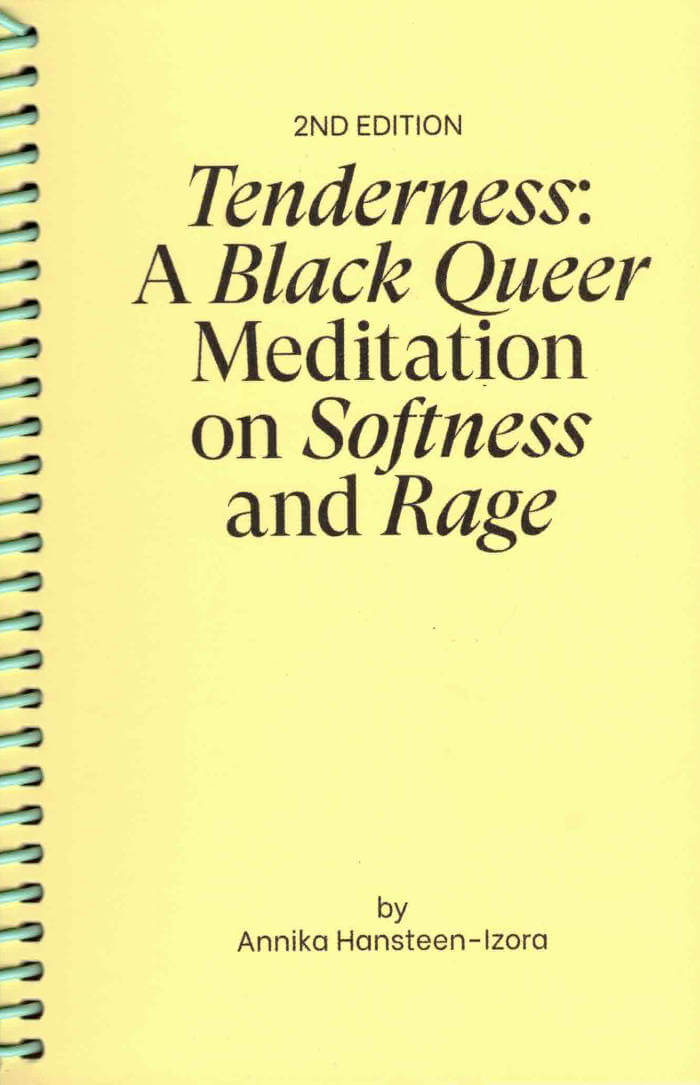
Tenderness A Black Queer Meditation On Softness And Rage (Second Edition)
Tenderness is back with a second edition and new title, Tenderness: A Black Queer Meditation on Softness and Rage. This second edition has all the original content from the first edition with more to explore, including a new preface from author Annika Hansteen-Izora.
What would it mean if tenderness could hold a simultaneous existence of joy and rage? How to call on tenderness as a practice of love, rather than a regurgitation of white supremacy? Author and writer Annika Hansteen-Izora explores answers in Tenderness: A Black Queer Meditation on Softness and Rage. A meditation, critical inquiry, and invitation to expand our imaginations on meanings of tenderness, this piece calls into question conceptions of tenderness that are rooted in desirability, anti-Blackness and white supremacy, and instead unfolds the potentials of tenderness as a tool, a balm, a healing agent, and a question to lean into.
Size: 5" x 7.5", 72 pages, spiral bound. Edition of 750.
Self published by Co—Conspirator Press with the support of Feminist Center for Creative Work. Written by Annika Hansteen-Izora. Copy Edited by Aliyah Blackmore. Designed and Illustrated by MJ Balvanera. Risograph printed by Neko Natalia. Bound by South Gate Bindery.
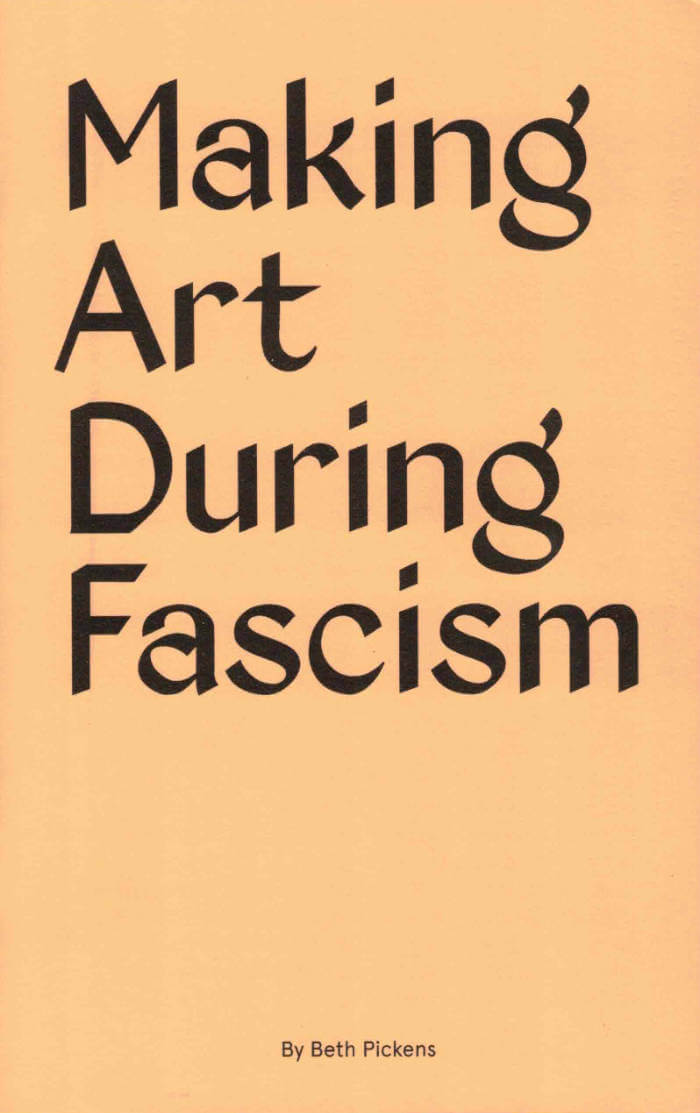
Making Art During Fascism
Designed and risograph printed by FCCW to accompany the workshop held at the Los Angeles Book Art Fair on February 25th, 2018. If you missed out on the workshop, grab a copy of the zine here! All proceeds benefit the Feminist Center for Creative Work.
Size: 5.5" x 8.5", 24 pages
Self published by Co—Conspirator Press with the support of Feminist Center for Creative Work. Designed by Kate Johnston, Riso-printed by Neko Natalia.

Two years Vacation
This book, Deux Ans de Vacances, Dos Años de Vacaciones, Dwa Lata Wakacji, Two years Vacation, Due Anni di Vacanza, documents the production of Céline Condorelli's process-based, cumulative artwork titled 'Tools for Imagination'. The title of the book raises the question of labour and working time, starting from a non-equivalence with its inverse: free time. We can read the various iterations of the title which appear on the cover as an expression of the impossibility of thinking about time outside of work in a univocal dimension.

Bill Magazine 5
BILL 5 contains 192 offset printed pages printed in CMYK, silver,
black and white on a dozen different paper stocks with
some Japanese bound signatures.
Sand, wind, tide, bills, tulips, LA, parking lots, waves, thoughts, bagels, prints, Tokyo, orchids, horses, backs, balm, magazines, updates, shadows, Elena's shoe, two mudbaths and a garage door...
by Boyle Family, Jochen Lempert, Ketuta Alexi-Meskhishvili, Gillian Garcia, Beat Streuli, Takashi Homma, JP, Adrianna Glaviano, Mimosa Echard, Rosalind Nashashibi, Gerald Domenig, Christian Kōun Alborz Oldham, Martiniano, Blommers Schumm

How to Leave the World
Everyone is asking about his identity. Gay? Muslim? French? Moroccan? Instead of choosing a side, he writes a book. A book about the forest and the city, Paris and Tangiers, shame and forgiveness, dating apps and spiritual discovery. A book about growing up as a diaspora kid in rural France, with desires that want to emerge at any cost. Told in mesmerising prose, How to Leave the World is a beautiful non-answer.
A rare book that depicts the isolation and poetry of rural life. —Annie Ernaux
What it takes to imagine social and physical freedom is what it meant to keep reading this incredible book. —Bhanu Kapil
Marouane Bakhti is a writer and arts journalist. Born in Nantes, France to a Moroccan father and a French mother, he studied history and journalism at the Sorbonne. He writes criticism for Mouvement magazine and lives in Paris. How to Leave the World is his first novel.
Lara Vergnaud is a literary translator of French and has translated over a dozen novels, including works by Zahia Rahmani, Fatima Daas, Mohamed Leftah and Mohamed Mbougar Sarr. Lara was born in Tunisia, grew up in the United States and currently lives in southern France.
978-1-7395161-3-0
21.6 x 13.9 cm
112 pp, paperback
September 2024

Black Meme
A history of Black imagery that recasts our understanding of visual culture and technology
In Black Meme, Legacy Russell, awardwinning author of the groundbreaking Glitch Feminism, explores the “meme” as mapped to Black visual culture from 1900 to the present, mining both archival and contemporary media.
Russell argues that without the contributions of Black people, digital culture would not exist in its current form. These meditations include the circulation of lynching postcards; why a mother allowed JET magazine to publish a picture of her dead son, Emmett Till; and how the televised broadcast of protesters in Selma changed the debate on civil rights. Questions of the media representation of Blackness come to the fore as Russell considers how citizen-recorded footage of the LAPD beating Rodney King became the first viral video. Why the Anita Hill hearings shed light on the media’s creation of the Black icon. The ownership of Black imagery and death is considered in the story of Tamara Lanier’s fight to reclaim the daguerreotypes of her enslaved ancestors from Harvard. Meanwhile the live broadcast on Facebook of the murder of Philando Castile by the police after he was stopped for a broken taillight forces us to bear witness to the persistent legacy of the Black meme.
Through imagery, memory, and technology, Black Meme shows us how images of Blackness have always been central to our understanding of the modern world.
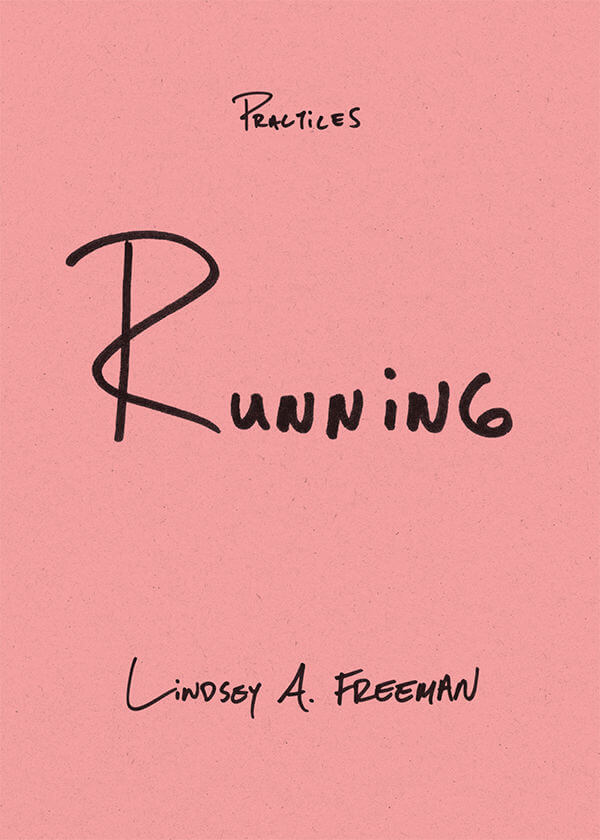
Running
In Running, former NCAA Division I track athlete Lindsey A. Freeman presents the feminist and queer handbook of running that she always wanted but could never find. For Freeman, running is full of joy, desire, and indulgence in the pleasure and weirdness of having a body. It allows for a space of freedom—to move and be moved. Through tender storytelling of a lifetime wearing running shoes, Freeman considers injury and recovery, what it means to run as a visibly queer person, and how the release found in running comes from a desire to touch something that cannot be accessed when still. Running invites us to run through life, legging it out the best we can with heart and style.

Fly-Fishing
In Fly-Fishing, Christopher Schaberg ponders his lifetime pursuit of the widely mythologized art of fly-fishing. From the Michigan lakeshore where he learned to fish to casting flies in a New Orleans bayou, Schaberg sketches landscapes and fish habitats and shows how fly-fishing allows him to think about coexisting with other species. It offers Schaberg a much-needed source of humility, social isolation, connection with nature, and a reminder of environmental degradation. Rather than centering fishing on trophies, conquest, and travel, he advocates for a “small-fishing” that values catching the diminutive fish near one’s home. Introspective and personal, Fly-Fishing demonstrates how Schaberg’s obsession indelibly shapes how he understands and lives in the wider world.
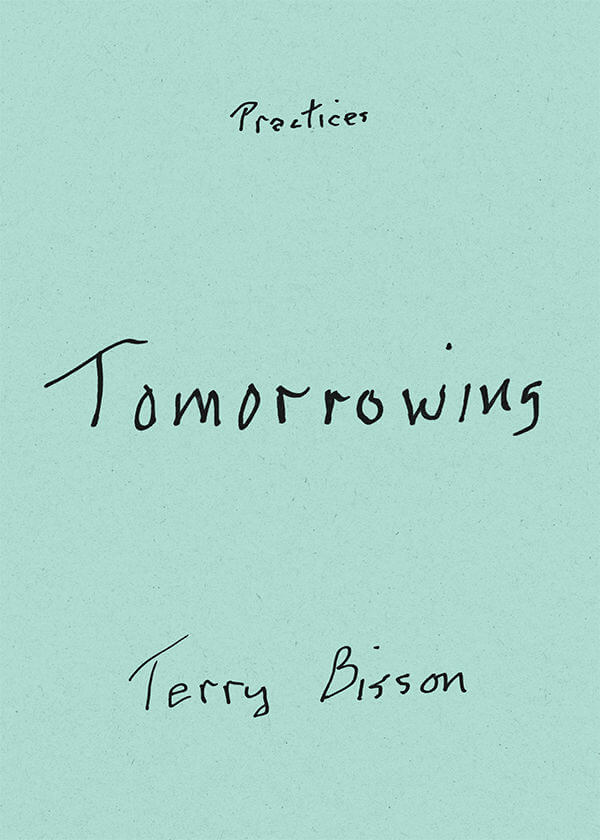
Tomorrowing
For twenty years, Terry Bisson published a regular “This Month in History” column in the science fiction magazine Locus. Tomorrowing collects these two decades of memorable events, four per month, each set in a totally different imaginary yet possible, inevitable yet avoidable future. From the first AI president to the first dog on Mars to the funeral of Earth’s last glacier, these stories are speculative SF at its most (and least) serious.
Collected as a series for the first time, Tomorrowing will amuse, alarm, intrigue, entertain, and like all good science fiction, make readers think. Bisson’s short stories have won every major award in science fiction, including the Hugo and the Nebula, but never, ever anything for this series.

Art as Experience
Based on John Dewey's lectures on esthetics, delivered as the first William James Lecturer at Harvard in 1932, Art as Experience has grown to be considered internationally as the most distinguished work ever written by an American on the formal structure and characteristic effects of all the arts: architecture, sculpture, painting, music, and literature.

Adrenalin
Adrenalin is Syrian-born, Stockholm-based Palestinian poet Ghayath Almadhoun’s first collection to be published in English. This sinuous translation by Catherine Cobham comprises poems that span years and continents, that circulate between cities, ideas, lovers, places of refuge, war zones, time zones, histories. Here is a vital, relentless, intertextual voice that refuses arrest by sentimentality, that pursues the poetry coursing underneath the poetry.
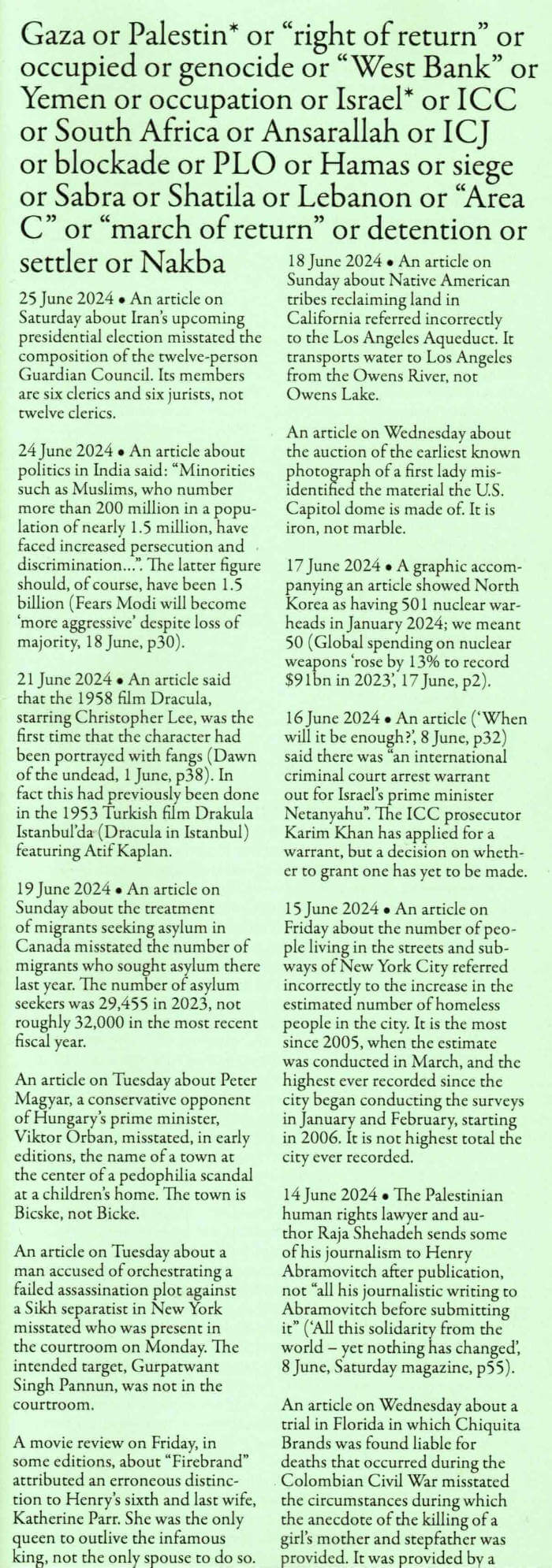
Gaza or Palestin* or "West Bank" or (...)
Anita Di Bianco’s ongoing project, Corrections and Clarifications, is a newspaper without headlines, a cyclical reverse-chronology of daily revisions, retractions, re-wordings, distinctions and apologies to print and online news, printed in numerous languages, locations, and formats since September 2001. An intermittent catalog of lapses in naming and classification, of tangled catchphrases, obstinate patterns of mis-speech and inflection, connotation and enumeration. The twentieth anniversary hardbound edition of the publication, entitled The Error is Regretted, was published in 2021 by The Green Box in Berlin.
This 2024 iteration, in a xeroxed edition of 100, collects corrections to news items back to 1981 — with its focus on the Eastern Mediterranean region, on patterns of mis-telling and misrepresentation through the persistent misuse of the passive voice, the omission of widely observable and verifiable facts and events, the euphemizing and toning down of deliberate actions, erasures through shifts in terminologies, through bold mistakes and tentative corrections.
Anita Di Bianco’s works in film, video, and print take up, modify and re-work existing and re-imagined patterns and characterization. Her work involves the imitative act, a taste for the possession and expulsion of narratives, the appropriation and accumulation of familiar texts and writing styles. Anita uses widely varying sources: from theatrical and historical texts to oft-quoted cinematic clips and thematic references. She lives in Frankfurt am Main.

Ik hier jij daar
'In de poëzie kunnen twee verschillende werelden elkaar ontmoeten, door gedichten kunnen we zonder ID denkbeeldige grenzen overschrijden en in dezelfde denkbeeldige ruimte verblijven. Maar is die ruimte wel dezelfde? Kunnen we losbreken uit onze rollen van slachtoffer en medeplichtige? Kunnen gedichten ons leren ons te identificeren met ongevoelde pijn? Wat spreekt er uit onze ontmoeting op papier?' - Anne Vegter
'Een dichter moet egoïstisch zijn, moet een eenzame wolf zijn, maar soms ontmoeten eenzame wolven elkaar in de wouden en jagen ze samen. Twee dichters, één boek: niet noodzakelijkerwijs om iets nieuws te bouwen, maar om de muren af te breken die ons tegenhouden wanneer we naar de andere oever willen oversteken. De Steen van Rosetta, die ervoor zorgt dat we het ongelezene lezen.' - Ghayath Almadhoun
Ghayath Almadhoun (1979) werd geboren in het Palestijnse vluchtelingenkamp Yarmouk in Damascus als zoon van een Palestijnse vader en een Syrische moeder. Hij studeerde Arabische literatuur aan de Universiteit van Damascus en werkte als cultureel journalist. Sinds 2008 woont hij in Stockholm. In Nederland verscheen in 2014 zijn lovend besproken dichtbundel 'Weg van Damascus'. Anne Vegter woont en werkt in Rotterdam. Van haar hand verschenen onder andere de verhalenbundels 'Ongekuiste versies' en 'Harries hoofdingang' en de dichtbundels 'Aandelen en obligaties', 'Spamfighter' en 'Eiland berg gletsjer'. Haar werk werd meermaals bekroond. De afgelopen vier jaar was ze Dichter des Vaderlands. De gedichten van Ghayath Almadhoun zijn uit het Arabisch vertaald door Djûke Poppinga.

How Are Artists Chosen? Exclusivity, precarious work and asymmetries in Art Competitions
Ramaya Tegegne, Tiphanie Blanc
The third volume of a new series of publications by the collective Wages For Wages Against, acting for better work conditions in the visual arts and against all forms of discrimination.
In 2022, the collective Wages for Wages Against applied for the Swiss Art Awards with the ambition of questioning the very model of the prize and its impact on artists. Art competitions are presented as real opportunities for artists, and arise throughout their careers, starting with school—entrance selection procedure, juried evaluations, diplomas and honors distinctions—, all the way to professional recognition—Meret Oppenheim Prize, Marcel Duchamp Prize, Turner Prize, etc. Only a handful of artists are selected for merit-based reward. However, this logic of sorting and validation upholds an entire system that reproduces inequalities and that perpetuates precarity in a milieu that is exclusive, and thus excludes. The institutional practices of communication and selection, as well as the validation of unpaid labor, favor certain artists at the expense of others. In this context, we surveyed the artists who participated, are considering participating, or are not participating in the Swiss Art Awards competition, in the interest of understanding their experiences and sharing their demands. In a broader sense, we wish to rethink the founding principles of artists' support policies and work to build a less competitive art world.
Wages For Wages Against (WFWA, wfwa.ch) is a a militant collective and a campaign for the fair remuneration of artists in Switzerland, better work conditions, and an alternative economy of the arts.
Contributions by Nathalie Stirnimann & Stefan Stojanovic and Amandine Gay.